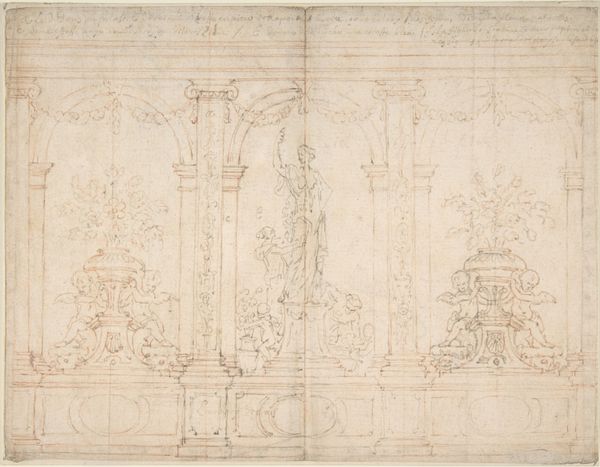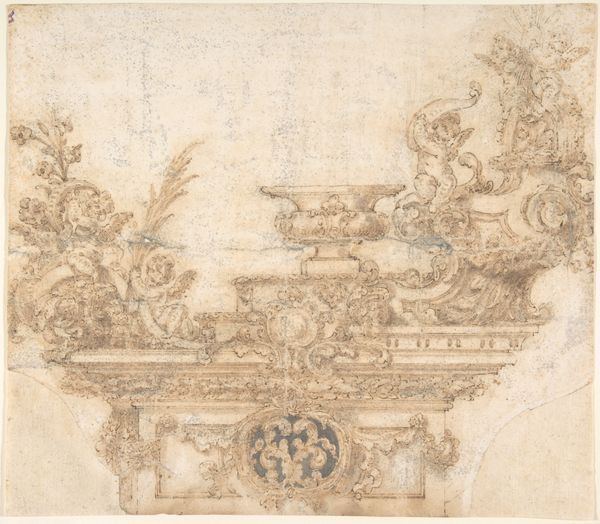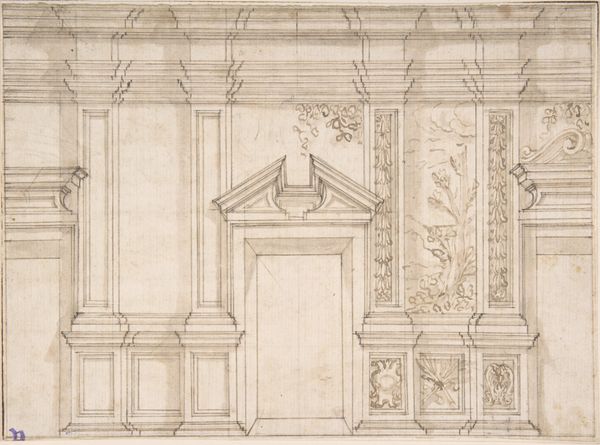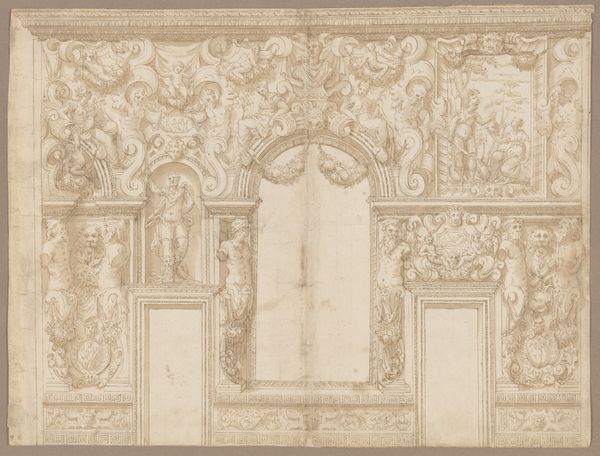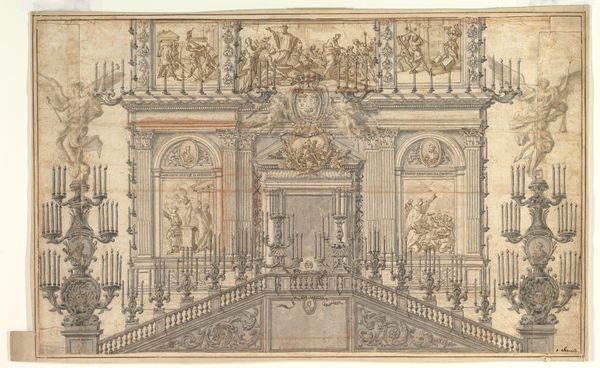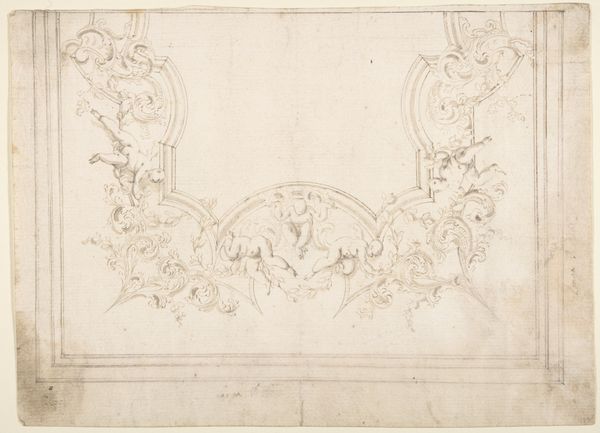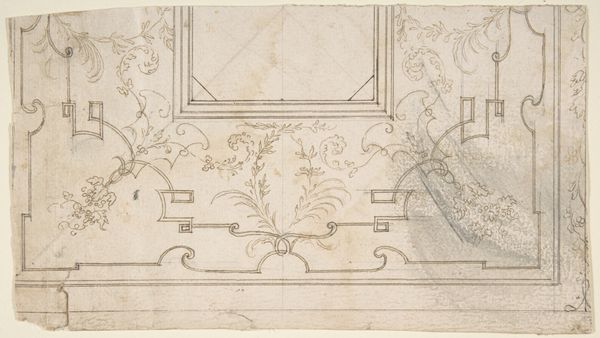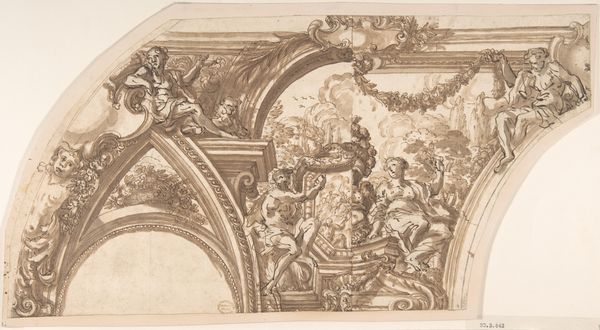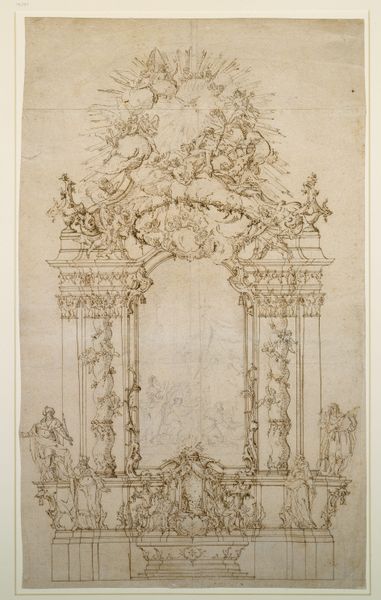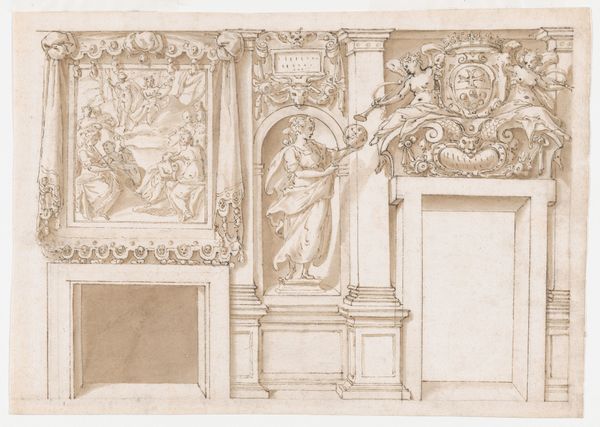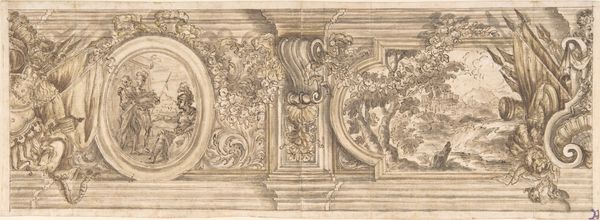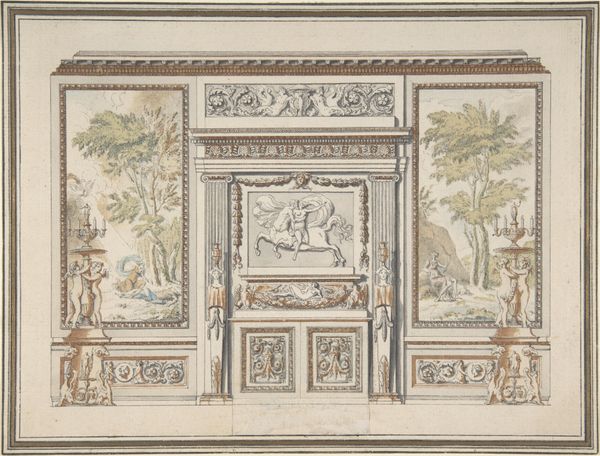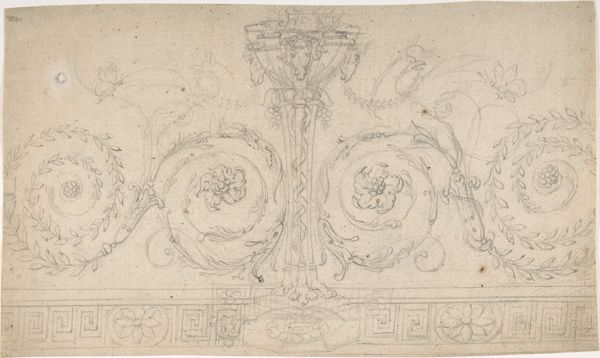
Design for a Theatre, or Hall for a Special Fête 1688 - 1690
0:00
0:00
drawing, pen, architecture
#
drawing
#
allegory
#
baroque
#
pen sketch
#
pen
#
history-painting
#
architecture
Dimensions: 10 1/2 x 17 1/16 in. (26.6 x 43.4 cm)
Copyright: Public Domain
Curator: Immediately, the overall impression is one of opulent grandeur, despite being a preliminary sketch. The meticulous detail suggests an artist completely in thrall to magnificence. Editor: Indeed. What we’re seeing is Giacomo Chiavistelli’s “Design for a Theatre, or Hall for a Special Fete,” created with pen and brown wash between 1688 and 1690. It offers us insight into the spectacle and performative nature of power during the late Baroque period. Curator: I'm drawn to how the putti are strategically positioned throughout the scene. Notice how they hold aloft symbolic banners and seem to mediate between the earthly and the divine realms? Editor: Right, putti are central figures in allegorical and decorative Baroque art. But observe how architectural design assumes a dramatic, theatrical function itself; its columns and pediments provide stages for displaying social power. Curator: Precisely, these architectural components aren't merely structural; they serve as a framework for elaborate iconography. This reinforces cultural values through repeated visual cues. Editor: We should consider this drawing within the historical context of courtly celebrations and public displays of wealth, influence, and ideology. Theatre provided a very public forum in that sense. Curator: Definitely. I also note how strategically history-painting is placed to remind viewers of significant political events, perhaps lending legitimacy or divine favor to whoever commissions it. These carefully constructed theatrical spaces ensured collective values were absorbed and reflected back at all attendees. Editor: And that gets to a larger point: architecture isn’t simply about the structure itself, but how the experience and consumption of imagery are engineered into civic spaces and rituals. Curator: A design such as this shows just how powerful Baroque architecture was at orchestrating narratives of authority. The symbolism and social context it invokes continues to shape cultural memories even now. Editor: So, reflecting on it, what appears at first to be pure artistic fancy also unveils some complex negotiations between power, perception, and public life back in Chiavistelli's time.
Comments
No comments
Be the first to comment and join the conversation on the ultimate creative platform.
